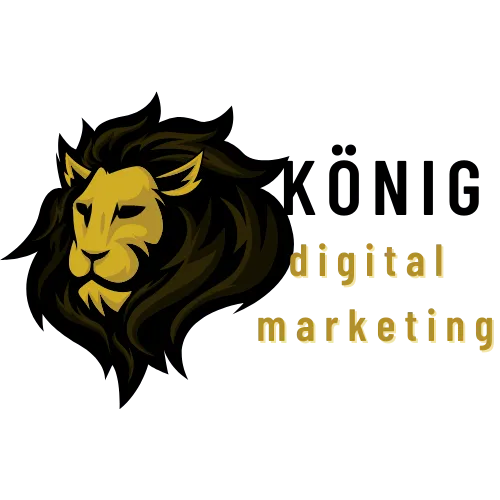

AI Marketing Automation & Lead Generation Solutions For B2B Scaling Founders
The only 3 things you need to rank #1 on Google. Get more patients and sales with our proven digital marketing services. Local SEO that gets results in 30 days or less!
AI Marketing Software & Lead Generation Solutions For Small Businesses
The only 3 things you need to rank #1 on Google. Get more customers and sales with our proven digital marketing services. Local SEO that gets results in 30 days or less!
Does Your Business Qualify For Fast Revenue Windfalls With A Database Re-Activation?
Multi-Channel Marketing Domination...
Marketing Automation
AI Powered Lead Generation
Multi-Channel Marketing Domination...

Transform your practice, amplify your patient base, and become the go-to dental supplier in your area. This isn't just an upgrade; it's a business-defining evolution.
Take charge of your growth today, dominate your market tomorrow. Ready to elevate your business? Let's connect!
The Ultimate AI Dental Manufacturer Growth Solution
Revolutionize your dental sales with our cutting-edge AI Dental Data Boost!
Crafted exclusively for ambitious dental suppliers, this game-changing solution doesn’t just fill your schedule—it transforms your practice into a thriving hub of new patients.
Here's what you'll get every month:
10,000 Targeted Data points: Dive into a vast pool of 10,000 meticulously enriched leads, each segmented by zip code, age, income, and mobile number. These aren't just names; they're detailed profiles tailored to match your ideal patient demographics.
Seamless CRM Integration: Say goodbye to manual data entry. Our advanced CRM system seamlessly integrates with your workflow, automatically loading leads and equipped with AI-powered nurture emails and appointment booking. Your schedule will be filled with qualified leads without lifting a finger.
Effortless Appointment Scheduling: Our AI doesn’t just schedule appointments; it optimizes your calendar based on conversion rates, ensuring your team's time is used efficiently, and every slot is maximized for potential patients.
Professional Call Center Support: To ensure no opportunity is missed, our dedicated call center professionals step in to seal the deal. They enhance lead engagement and ensure that your calendar is booked solid with quality appointments.
The Result? A constant stream of high-quality appointments flooding your calendar, ready to become long-term clients. You're not just growing your business; you're revolutionizing client acquisition.
The Ultimate AI Recruitment Accelerator
Unlock the full potential of your recruitment efforts with our exclusive AI Recruitment Accelerator package!
Designed specifically for forward-thinking recruitment firms, this powerhouse solution promises not just to fill your pipeline but to transform it into a dynamic engine of growth.
Here’s what you get every single month:
10,000 Precision-Targeted Data Points: Not just any leads, but 10,000 enriched contacts meticulously curated to connect you with key industry decision-makers. This isn't about quantity alone; it's about premium quality that converts.
Fully Integrated CRM System: We don't just hand over leads; we streamline them directly into a state-of-the-art CRM system. This system isn’t just a database—it’s your automated sales force, equipped with advanced nurture emails and AI-driven appointment scheduling, working tirelessly to warm up your prospects.
Automatic Appointment Setting: Forget the hassle of back-and-forth scheduling. Our AI tools analyze responses and optimize appointment times to fill your calendar efficiently. Each slot is meticulously planned to maximize your team’s productivity and focus on closing deals.
Dedicated Call Center Support: To ensure no opportunity slips through, our professional call center steps in to seal the deal. They’re your closing cavalry, enhancing lead engagement and ensuring your calendar transitions from busy to booming.

Make the switch to smarter recruiting. Transform your approach, multiply your outcomes, and dominate your sector. This isn’t just an upgrade. It’s a revolution.
Act now, dominate tomorrow. Ready to boost your recruitment game? Let’s talk!
The Ultimate AI Insurance Data Machine

Supercharge your insurance sales with our unparalleled AI Insurance Data Machine! Crafted for ambitious insurance agencies aiming to eclipse their competition, this all-in-one solution not just fills your sales funnel—it transforms it into a high-performance conversion machine.
Here's what your agency gains every month::
10,000 High-Quality Data Points: Dive into a pool of 2,000 meticulously enriched leads, each segmented by zip code, age, and income. These aren't random contacts; they're tailored picks designed to match your ideal customer profile, dramatically increasing the chances of conversion.
Fully Automated CRM Integration: Say goodbye to manual data entry. Our sophisticated CRM system automatically absorbs every lead, armed with advanced nurturing emails and an AI-driven appointment setting feature that works round-the-clock to warm up your prospects.
Effortless Appointment Booking: Our AI doesn't just schedule appointments; it optimizes your calendar based on peak conversion times, ensuring that your team's efforts are maximized and no opportunity is missed.
Professional Call Center Backup: To guarantee that every lead is capitalized on, our dedicated call center professionals provide the extra push needed. They enhance engagement and ensure that your calendar transitions from filled to fruitful.
The Outcome? A relentless stream of high-potential appointments flooding your calendar, ready for conversion. You’re not just playing the game; you're outsmarting the field. Transform your sales process, amplify your results, and become a leader in your market. This isn't just an advancement—it’s a complete overhaul of how you engage with potential clients.
Take action today, dominate your market tomorrow. Are you ready to elevate your insurance sales? Let's connect!
The Ultimate AI Recruitment Accelerator

Unlock the full potential of your recruitment efforts with our exclusive AI Recruitment Accelerator package!
Designed specifically for forward-thinking recruitment firms, this powerhouse solution promises not just to fill your pipeline but to transform it into a dynamic engine of growth.
Here’s what you get every single month:
10,000 Precision-Targeted Data Points: Not just any leads, but 1,000 enriched contacts meticulously curated to connect you with key industry decision-makers. This isn't about quantity alone; it's about premium quality that converts.
Fully Integrated CRM System: We don't just hand over leads; we streamline them directly into a state-of-the-art CRM system. This system isn’t just a database—it’s your automated sales force, equipped with advanced nurture emails and AI-driven appointment scheduling, working tirelessly to warm up your prospects.
Automatic Appointment Setting: Forget the hassle of back-and-forth scheduling. Our AI tools analyze responses and optimize appointment times to fill your calendar efficiently. Each slot is meticulously planned to maximize your team’s productivity and focus on closing deals.
Dedicated Call Center Support: To ensure no opportunity slips through, our professional call center steps in to seal the deal. They’re your closing cavalry, enhancing lead engagement and ensuring your calendar transitions from busy to booming.
Make the switch to smarter recruiting. Transform your approach, multiply your outcomes, and dominate your sector. This isn’t just an upgrade. It’s a revolution.
Act now, dominate tomorrow. Ready to boost your recruitment game? Let’s talk!
The Ultimate AI Dental Practice Growth Solution

Transform your practice, amplify your patient base, and become the go-to dental practice in your area. This isn't just an upgrade; it's a practice-defining evolution.
Revolutionize your dental practice with our cutting-edge AI Dental Data Boost!
Crafted exclusively for ambitious dental practices, this game-changing solution doesn’t just fill your schedule—it transforms your practice into a thriving hub of new patients.
Here's what you'll get every month:
10,000 Targeted Data points: Dive into a vast pool of 10,000 meticulously enriched leads, each segmented by zip code, age, income, and mobile number. These aren't just names; they're detailed profiles tailored to match your ideal patient demographics.
Seamless CRM Integration: Say goodbye to manual data entry. Our advanced CRM system seamlessly integrates with your workflow, automatically loading leads and equipped with AI-powered nurture emails and appointment booking. Your schedule will be filled with qualified leads without lifting a finger.
Effortless Appointment Scheduling: Our AI doesn’t just schedule appointments; it optimizes your calendar based on conversion rates, ensuring your team's time is used efficiently, and every slot is maximized for potential patients.
Professional Call Center Support: To ensure no opportunity is missed, our dedicated call center professionals step in to seal the deal. They enhance lead engagement and ensure that your calendar is booked solid with quality appointments.
The Result? A constant stream of high-quality appointments flooding your calendar, ready to become long-term patients. You're not just growing your practice; you're revolutionizing patient acquisition.
Take charge of your growth today, dominate your market tomorrow. Ready to elevate your practice? Let's connect!
Transform Your Business with Smart Marketing Automation Software...
Local SEO Services
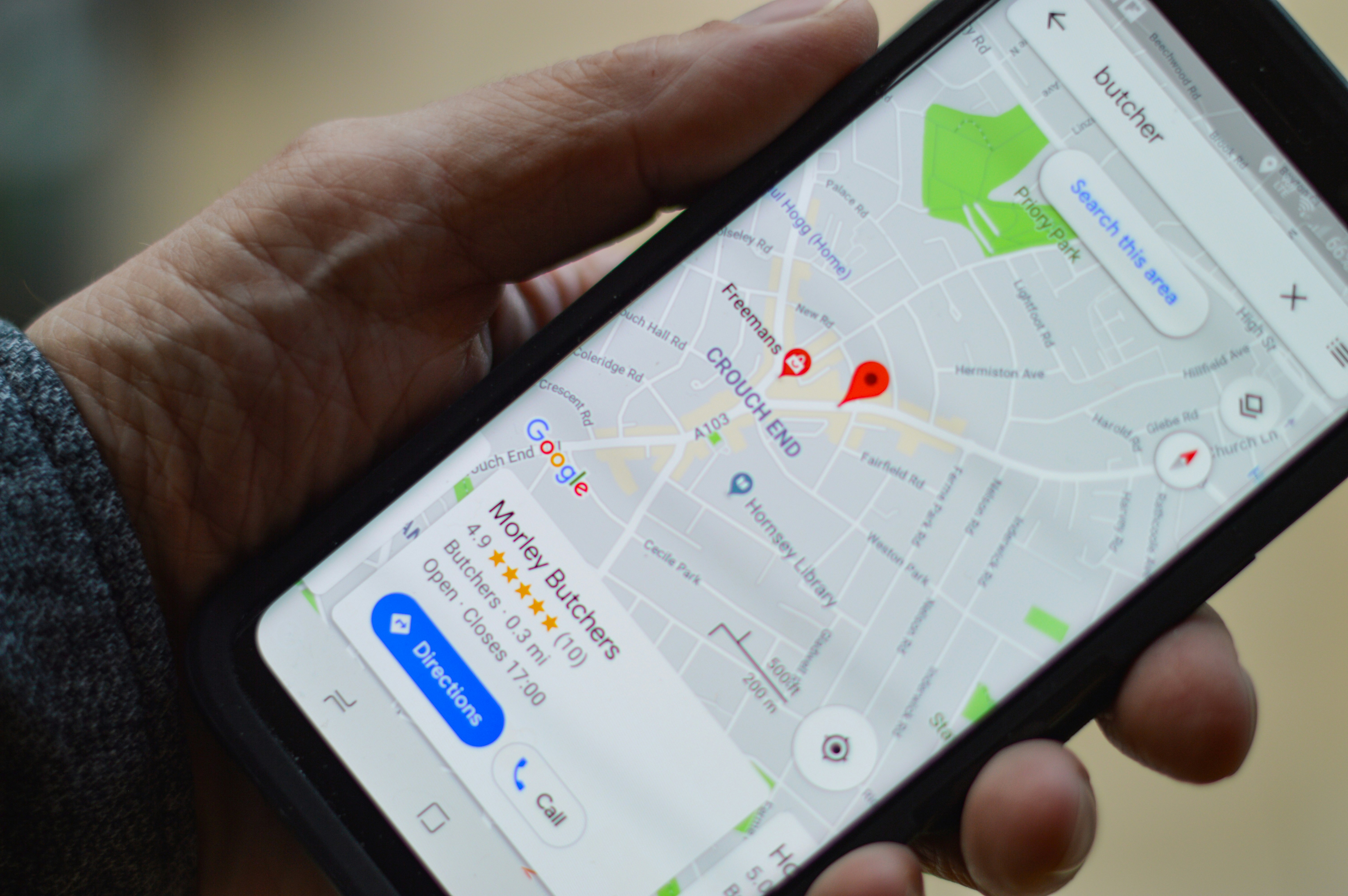
Local SEO
Local SEO is different from national SEO because it focuses on your community, in your business catchment where more than 85% of your customers come from and will come from, the very nature of local business marketing is competitive because you and all your competitors are wanting a slice of the same pie, local SEO is how you win…

Google My Business
Google My Business is the most powerful local SEO tool. It’s free, and it’s easy to use. If you have a business with a physical location, this is your chance to get more customers in the door, however, it is competitive and GMB SEO is needed to get in the 3-pack and stay there and that is where we come in, show up in near me search and do business…

Google Local Services Ads
Are you a local business owner looking to dominate your local community with your services? Look no further than Google Local Services Ads! By using Google Local Services Ads, you can reach potential customers in your area who are actively searching for the services you offer. These ads appear at the top of Google search results, making them highly visible and effective.

3 Click Facebook Ads
New marketing automation software that helps businesses create Facebook ad campaigns with ease. With UpHex, creating ad campaigns has been simplified into a three-step process that anyone can complete. The platform allows users to create high-converting Facebook ads quickly and easily, using templates and automation tools.
Hear From Our Customers...
Alexis Williams
Dr CL Steyn - Orthopedic Surgeon
Elana Swart-Traut - Director Riverside College
Brandon Boyd
Pamela Runge - P2P Dental Connect
Riaan Willemse - Chris Willemse Painters
Terrys Tarot Readings
FAQ's
What is SEO?
SEO, or Search Engine Optimization, refers to the process of optimizing a website to improve its visibility in search engine results pages (SERPs). The goal is to increase organic (non-paid) traffic by enhancing the site's relevance and authority for specific keywords or phrases related to the content or services offered.

Why is SEO important?
SEO is crucial because it makes your website more visible to potential customers, leading to more traffic and opportunities to convert prospects into customers. It's a fundamental part of digital marketing because people conduct trillions of searches every year, often with commercial intent.

How does Google rank websites?
Google uses a complex algorithm that takes into account over 200 factors to rank websites. These factors include user experience, site speed, content quality, keyword relevance, mobile-friendliness, and inbound links, among others. The exact algorithm is a closely guarded secret and is constantly evolving.

What are keywords, and why are they important?
Keywords are words or phrases that users enter into search engines to find information. They are important because optimizing your website with relevant keywords helps search engines understand what your site is about, allowing it to show your site to the right audience.

What's the difference between on-page and off-page SEO?
On-page SEO refers to optimizations you can apply on your website, such as content quality and keyword optimization, meta tags, and site architecture. Off-page SEO involves external factors that influence your site's ranking but aren't directly on your site, like backlinks, social media presence, and other promotional activities outside your website.
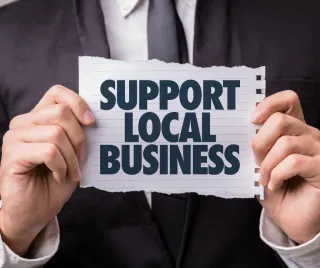
How long does it take to see results from SEO?
The timeframe to see results from SEO can vary greatly depending on numerous factors, such as the website's current state, competition in your industry, and the strategies implemented. Generally, noticeable improvements can be seen within 3 to 6 months, but SEO is an ongoing process that requires continuous effort for sustained success.

Are backlinks still important for SEO?
Yes, backlinks are still a critical factor in SEO. They act as a vote of confidence from one site to another, signaling to search engines that others vouch for your content. However, quality over quantity is crucial; a few high-quality backlinks from reputable sites are far more valuable than many low-quality links.

Can I do SEO on my own?
Yes, it's possible to do SEO on your own, especially with the wealth of resources and tools available online. However, SEO can be complex and time-consuming. Depending on your skill level and the competitiveness of your industry, you might benefit from hiring a professional or agency to manage your SEO efforts.
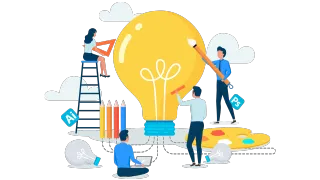
How do I choose the right keywords?
Choosing the right keywords involves researching to understand what terms your target audience is using to find products or services like yours. Tools like Google Keyword Planner and SEMrush can help identify relevant keywords, their search volume, and competition level. Focus on a mix of broad and long-tail keywords that accurately represent your content.
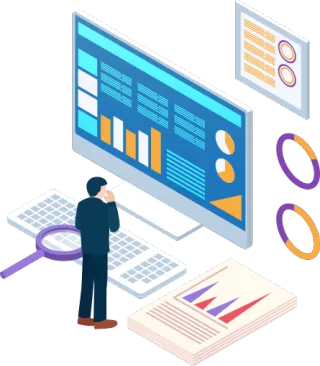
How has SEO changed over the years?
SEO has evolved significantly from simply stuffing pages with keywords to a more sophisticated approach that prioritizes user experience, content quality, and relevance. Search engines have become better at understanding user intent, promoting websites that provide value to users. As a result, modern SEO strategies focus more on creating high-quality content, optimizing for mobile users, and ensuring fast page loading times.

Why do you call your SEO service "Trust Based Ranking"?
"Trust Based Ranking" simply refers to doing SEO the right way or "white hat" as some might refer to it, we've been doing SEO and ranking since 2008 and through the years we've seen instant "black hat" methods crash and burn and Google rewarding and ranking websites sticking to the guidelines and delivering valuable content and service to their community, simply put it pays to gain Google's trust because your business will benefit from profitable search rankings.

From Our Blog

How To Fix a B2B Pipeline: A Complete Guide for 2025
Is your B2B sales pipeline underperforming?
You're not alone. According to recent research, nearly 60% of B2B organizations struggle with pipeline efficiency issues that directly impact revenue goals.
Whether you're facing sluggish conversion rates, extended sales cycles, or a concerning decline in qualified leads, understanding how to diagnose and repair your pipeline is essential for business growth.

What Is a B2B Pipeline?
A B2B (business-to-business) pipeline is the structured sequence of stages that potential customers move through—from initial awareness to final purchase decision.
Unlike B2C transactions, B2B pipelines typically involve multiple stakeholders, longer decision timelines, and higher transaction values.
Your pipeline serves as both a roadmap for your sales team and a health indicator for your entire revenue operation.
Why Your Pipeline Health Matters
The consequences of a broken pipeline extend far beyond missed sales targets:
Revenue predictability suffers when you can't accurately forecast future business
Resource allocation becomes inefficient as teams focus on the wrong opportunities
Customer acquisition costs increase without proper pipeline optimization
Growth initiatives stall without a reliable foundation of new business
Most importantly, your pipeline represents the lifeblood of your organization's future. When it functions properly, it delivers a steady, predictable flow of new business that fuels expansion and creates stability.
7 Warning Signs Your B2B Pipeline Needs Fixing
Before diving into solutions, it's crucial to recognize the symptoms of pipeline dysfunction:
Declining conversion rates between critical pipeline stages
Lengthening sales cycles that exceed industry benchmarks
Increasing "stalled" opportunities that neither advance nor close
Sales forecasts that consistently miss the mark
Growing discrepancy between marketing qualified leads and sales qualified leads
Declining average deal size despite similar prospect profiles
High variability in performance across sales representatives using the same process
Identifying these warning signs is the first step toward implementing effective solutions. In our experience working with hundreds of B2B organizations, pipeline problems rarely exist in isolation—they're typically interconnected symptoms of deeper strategic or operational issues.
The Pipeline Repair Framework
Fixing your B2B pipeline isn't about quick fixes or temporary patches. It requires a systematic approach:
Diagnose with data to identify specific breakpoints
Align teams around a shared understanding of the problems
Implement targeted interventions based on pipeline stage
Measure results with consistent metrics
Iterate and improve through continuous optimization
Throughout this guide, we'll walk through each element of this framework, providing actionable strategies that have been proven to revitalize underperforming B2B pipelines across industries.
From refining your ideal customer profile to implementing advanced sales enablement practices, you'll discover practical approaches to transform your pipeline from a point of frustration to a competitive advantage.
Check out my new Udemy course B2B Sales Masterclass: Cut Sales Cycles 30% with AI
Diagnosing Pipeline Problems
Before implementing solutions, you need a precise diagnosis of what's causing your pipeline issues. Effective diagnosis requires both quantitative analysis and qualitative insights to uncover the root causes rather than just addressing symptoms.
Key Metrics That Reveal Pipeline Health Issues
Start your diagnosis by examining these critical pipeline metrics:
Stage Conversion Rate = (Number of Opportunities that Advanced ÷ Total Number of Opportunities in Stage) × 100
1. Conversion Rates Between Stages
The most revealing metric is how effectively prospects move from one pipeline stage to the next. Calculate conversion rates between each stage:
Industry Benchmark: While benchmarks vary by sector, healthy B2B pipelines typically maintain at least a 25-30% conversion rate from initial qualification to proposal stage.
Red Flag: If you notice a significant drop in conversion at a specific stage (>15% below your historical average), you've identified a critical breakdown point requiring immediate attention.
2. Velocity Metrics
Measure how quickly opportunities move through your pipeline:
Average days per stage: How long opportunities remain in each stage
Total sales cycle length: Time from first touch to closed deal
Stagnation percentage: Proportion of deals inactive for >30 days
Industry Benchmark: The average B2B sales cycle ranges from 3-6 months for mid-market deals and 6-18 months for enterprise sales.
Red Flag: When specific stages consistently take 50% longer than your established baseline, process inefficiencies or qualification issues likely exist.
3. Pipeline Coverage Ratio
This metric indicates whether you have sufficient opportunities to meet revenue targets:
Pipeline Coverage Ratio = Total Pipeline Value ÷ Revenue Target
Industry Benchmark: Most successful B2B organizations maintain 3-5x pipeline coverage for their quarterly targets.
Red Flag: Coverage below 3x indicates insufficient lead generation or poor lead-to-opportunity conversion.
4. Win Rate Analysis
Examine win rates across different segments:
By lead source
By product/service type
By account size
By sales representative
By industry vertical
Red Flag: When win rates vary significantly across these dimensions, it suggests misalignment in targeting, messaging, or sales approach.
Identifying Common Pipeline Bottlenecks
Once you've analyzed the metrics, look for these typical bottlenecks:
The Qualification Bottleneck
Symptoms:
High volume of leads entering the pipeline
Low conversion from MQL to SQL
Sales team complaints about lead quality
Potential Causes:
Marketing and sales misalignment on lead definitions
Outdated ideal customer profile (ICP)
Ineffective lead scoring methodology
Premature hand-offs between teams
The Proposal Bottleneck
Symptoms:
Opportunities stall after initial interest
Long delays in proposal creation
Low proposal-to-close conversion rate
Potential Causes:
Inadequate discovery process
Proposal content misaligned with customer needs
Pricing or packaging complexity
Lack of sense of urgency
The Negotiation/Closing Bottleneck
Symptoms:
Deals that remain in "closing" stages for extended periods
Increasing discount requests
Last-minute objections arising
Potential Causes:
Value proposition not clearly established earlier in process
Failure to engage all decision-makers
Undefined negotiation parameters
Insufficient competitive differentiation
Conducting a Pipeline Leak Analysis
To identify where opportunities are falling out of your pipeline:
Create a cohort analysis: Track a specific group of leads that entered your pipeline during the same period
Map the drop-off points: Identify where the most significant percentage of opportunities exit
Perform loss reason analysis: Categorize and quantify reasons for lost opportunities
Exit interviews: Reach out to prospects who disengaged to understand why
Pro Tip: Create a visual funnel representation of your findings to clearly communicate problem areas to stakeholders. This visualization helps build consensus around improvement priorities.
Qualitative Assessment: Beyond the Numbers
While metrics provide the "what," qualitative research uncovers the "why" behind pipeline problems:
Sales call analysis: Review recorded sales conversations at problematic pipeline stages
Win/loss interviews: Speak directly with recent customers and lost prospects
Internal stakeholder feedback: Gather insights from sales, marketing, product, and customer success teams
Competitive intelligence review: Analyze how competitors' approaches differ from yours
Creating Your Pipeline Diagnosis Document
Synthesize your findings into a comprehensive diagnosis that includes:
Current state assessment: Key metrics showing pipeline performance
Identified bottlenecks: Specific stages where problems occur
Root causes: Underlying issues behind each bottleneck
Priority ranking: Which problems have the greatest impact on revenue
Recommended focus areas: Where to begin your pipeline repair efforts
This diagnosis becomes your roadmap for implementing the targeted fixes we'll explore in subsequent sections.
Remember that effective pipeline repair doesn't try to fix everything at once—it prioritizes the highest-impact problems first.
With a clear diagnosis in hand, you're ready to implement specific strategies to address each problem area, beginning with refining your Ideal Customer Profile (ICP) and buyer personas—the foundation of any healthy B2B pipeline.
Strategy #1: Refining Your ICP and Buyer Personas
Many B2B pipeline problems stem from a fundamental issue: pursuing the wrong prospects.
If your pipeline is filled with poorly-fit opportunities, even the most refined sales process won't deliver results.
That's why the first step in fixing your pipeline is revisiting and refining your Ideal Customer Profile (ICP) and buyer personas.
Why Your ICP May Be Outdated
Your Ideal Customer Profile isn't a static document—it should evolve as your business, market, and competitive landscape change. Several factors can render your ICP obsolete:
Product evolution: New features may appeal to different customer segments
Market shifts: Industry disruptions can change buying priorities
Competitive landscape: New entrants may force you to refocus on different segments
Economic conditions: Budget constraints may shift decision criteria
Internal changes: New growth targets might require targeting different account profiles
According to research by Gartner, B2B organizations that regularly update their ICPs achieve 68% higher win rates than those that review them infrequently or not at all.
The Data-Driven ICP Refresh Process
Follow these steps to rebuild your ICP based on current market realities and your actual performance data:
1. Analyze Your Current Customer Base
Start by examining your existing customers:
Profitability analysis: Which customers generate the highest profit margins?
Implementation success: Which customers adopted your solution most successfully?
Expansion revenue: Which customers increased their spending over time?
Advocacy levels: Which customers refer others and provide testimonials?
Support requirements: Which customers require minimal support resources?
Pro Tip: Create a customer value score that combines these factors to identify your truly ideal customers, not just your largest ones.
2. Identify Common Characteristics
Look for patterns among your highest-value customers:
Firmographic data: Industry, company size, revenue, growth rate, geography
Technographic data: Technology stack, digital maturity, integration requirements
Operating model: Centralized vs. decentralized decisions, innovation appetite
Business challenges: Common pain points, strategic initiatives, regulatory pressures
Buying process: Decision committee size, approval layers, typical timelines
3. Contrast With Poor-Fit Customers
Equally important is understanding which customers consume resources without delivering adequate returns:
Analyze customers with high churn risk
Identify accounts with low product adoption
Review customers requiring excessive support
Examine accounts with frequent price objections
This "negative ICP" helps you recognize red flags early in the sales process.
4. Map to Total Addressable Market
Once you've refined your ICP characteristics:
Quantify how many companies match these criteria in your target markets
Segment this addressable market into tiers based on fit scores
Calculate the revenue potential of each tier
Determine if your refined ICP provides sufficient growth opportunity
5. Document and Distribute Your Refined ICP
Create a comprehensive ICP document that includes:
Clear fit criteria: Specific, measurable attributes that define ideal accounts
Tiering framework: How to categorize prospects by fit (e.g., Tier 1, 2, 3)
Disqualification triggers: Explicit red flags that indicate poor fit
Total addressable market data: Size and distribution of your target market
Success stories: Examples of ideal customers and their outcomes
Updating Buyer Personas for Pipeline Effectiveness
While your ICP focuses on company-level fit, buyer personas address the individuals involved in the purchasing decision.
Today's B2B buying committees average 6-10 members, each with different priorities and perspectives.
The Multi-Persona Buying Committee
Modern B2B buying committees typically include:
Economic Buyer: Controls budget and makes final decisions
Technical Buyer: Evaluates solution capabilities and implementation requirements
User Buyer: Will use the solution day-to-day
Procurement Professional: Manages vendor relationships and contracting
Executive Sponsor: Champions the initiative internally
Influencers: Subject matter experts who shape requirements
For each persona, develop detailed profiles including:
Role and responsibilities: Professional focus and key performance indicators
Business objectives: What success looks like in their position
Pain points: Specific challenges they face related to your solution
Information preferences: How they consume content and research solutions
Objection patterns: Common concerns they typically raise
Language patterns: Terminology they use to describe challenges and goals
Aligning Content and Conversations to Personas
Once you've updated your buyer personas, ensure your pipeline activities address their specific needs:

Implementing Your Refined ICP and Personas
With updated ICPs and personas in hand, take these actions to improve your pipeline:
1. Score Your Current Pipeline
Apply your new ICP criteria to existing opportunities
Identify which deals match your refined ideal profile
Consider deprioritizing opportunities with poor fit scores
2. Update Lead Qualification Frameworks
Revise MQL and SQL definitions based on new ICP criteria
Create scoring models that prioritize high-fit leads
Implement progressive profiling to gather key qualifying information
3. Retrain Sales and Marketing Teams
Conduct workshops on the refined ICP and personas
Develop call scripts and email templates for each persona
Create battlecards addressing common objections by persona
Practice identifying buying committee roles in active opportunities
4. Optimize Account Targeting
Refine account-based marketing (ABM) target lists
Develop tiered outreach strategies based on ICP fit score
Create look-alike models based on your best customers
Case Study: ICP Refinement in Action
A mid-market SaaS company was struggling with a 12% win rate and an average sales cycle of 115 days. After conducting an ICP refresh, they discovered they were most successful with manufacturing companies undergoing digital transformation initiatives with annual revenues between $50-250 million.
By realigning their pipeline around this refined ICP:
Win rate increased to 28% within two quarters
Average sales cycle decreased to 83 days
Average contract value increased by 22%
Customer acquisition cost decreased by 17%
Measuring the Impact of Your ICP and Persona Refinement
Track these metrics to assess the effectiveness of your refinement efforts:
ICP match rate: Percentage of pipeline opportunities matching your ICP
Persona coverage: Percentage of deals with engagement across all key personas
Qualification efficiency: Time from lead to qualified opportunity
Forecasting accuracy: Improvement in pipeline predictability
Win rate by ICP tier: Conversion rates segmented by ICP fit score
Remember that ICP and persona refinement is not a one-time exercise. Schedule quarterly reviews to ensure these foundational elements remain aligned with market conditions and your evolving solution capabilities.
By building your pipeline repair efforts on the foundation of a well-defined ICP and comprehensive buyer personas, you create the conditions for success in all subsequent pipeline stages.
Strategy #2: Lead Generation and Qualification Improvements
Once you've refined your ICP and buyer personas, the next critical step in fixing your B2B pipeline is enhancing your lead generation and qualification processes.
Even the most well-defined target audience won't fill your pipeline unless you have effective mechanisms to attract and properly qualify potential buyers.
Auditing Your Current Lead Sources
Before implementing new lead generation strategies, assess the performance of your existing channels:
Lead Source Performance Matrix
Create a comprehensive analysis of each lead source using these metrics:

This evaluation should uncover:
Which channels deliver the highest quality leads
Which sources have the best economics
Where you're underinvesting relative to performance
Which channels align best with your ICP
Pro Tip: Don't just evaluate lead sources on volume or cost—the full-funnel conversion rates and ultimate customer value are far more important indicators of true performance.
Diversifying Lead Generation Strategies
Most B2B organizations rely too heavily on a limited set of lead sources. Research by Forrester shows that companies using 4+ coordinated lead generation channels achieve 300% higher conversion rates than those using fewer channels.
Consider these high-impact lead generation strategies aligned with modern B2B buying behaviors:
1. Content-Driven Demand Generation
Approach: Create high-value, authoritative content that addresses specific pain points identified in your buyer personas.
Implementation Steps:
Develop cornerstone content pieces for each stage of the buying journey
Optimize for search intent related to your ICP's pain points
Create ungated thought leadership content to build awareness
Gate only high-value, decision-stage content
Amplify through both organic social and paid distribution
Key Metrics:
Organic traffic growth to key content pages
Time on page and engagement metrics
Content attribution to pipeline opportunities
Keyword ranking for high-intent search terms
2. Account-Based Marketing Programs
Approach: Focus resources on targeted outreach to specific accounts that precisely match your ICP.
Implementation Steps:
Build target account lists based on ICP fit scores
Create account-specific messaging and content
Coordinate multi-channel touchpoints (email, social, direct mail, ads)
Align marketing activities with sales outreach
Develop engagement scenarios for different stakeholders
Key Metrics:
Target account engagement rate
Multi-stakeholder coverage within accounts
Account penetration percentage
Pipeline velocity for ABM-sourced opportunities
3. Industry Event and Webinar Strategy
Approach: Participate in or host events where your ICP naturally gathers to learn.
Implementation Steps:
Prioritize events based on ICP attendance data
Develop presentation topics aligned with buyer pain points
Create event-specific follow-up sequences
Consider co-marketing with complementary solution providers
Balance in-person and virtual event investments
Key Metrics:
Event-generated meetings ratio
Cost per qualified opportunity
Conversion rate from event to opportunity
Post-event engagement metrics
4. Strategic Partnership Ecosystem
Approach: Develop partnerships with companies that already serve your ICP.
Implementation Steps:
Identify potential partners with complementary solutions
Establish formal referral or reseller programs
Create co-branded content and joint value propositions
Develop clear partnership engagement processes
Train partner teams on your ideal opportunities
Key Metrics:
Partner-sourced lead volume
Partner lead conversion rates
Average deal size from partner channels
Partnership program ROI
5. Targeted Outbound Prospecting
Approach: Implement focused outreach to prospects who precisely match your ICP.
Implementation Steps:
Build highly targeted prospect lists from reliable data sources
Develop personalized outreach sequences by persona and industry
Test multiple message approaches and cadences
Align outbound messaging with content marketing themes
Implement responsive lead routing for inbound inquiries
Key Metrics:
Response rates to outreach sequences
Meeting conversion rates
Pipeline contribution from outbound efforts
Cost per qualified opportunity
Revolutionizing Your Lead Qualification Process
The gap between marketing qualified leads (MQLs) and sales qualified leads (SQLs) is where many pipelines develop critical leaks. Improving qualification processes can dramatically increase pipeline efficiency.
From Traditional MQL/SQL to the Revenue Qualification Framework
Many companies still use outdated qualification models that focus too heavily on activity-based scoring rather than actual buying intent and fit. Consider implementing a more sophisticated model:
The Revenue Qualification Framework:
Target Fit (TF): How well does the prospect match your ICP?
Company size, industry, technology environment
Growth trajectory and financial health
Organizational structure and decision process
Problem Awareness (PA): Does the prospect recognize they have a problem you solve?
Articulated pain points matching your solution
Active initiatives around related challenges
Evidence of research on potential solutions
Solution Interest (SI): Is there interest specifically in your approach?
Engagement with solution-specific content
Questions about your differentiation
Requests for capability demonstrations
Buying Power (BP): Does the contact have influence in the purchase decision?
Role in the decision process (recommender vs. decision-maker)
Budget authority or influence
Previous purchase history for similar solutions
Urgency Indicators (UI): What suggests this is a near-term priority?
Defined timeline for selection
Triggering events (e.g., contract expiration)
Resource allocation for implementation
Competitive pressures driving change
This framework creates a more nuanced qualification approach than traditional MQL/SQL binary classifications.
Implementing Progressive Qualification
Instead of trying to qualify leads fully on first contact, implement progressive qualification:
Initial Qualification (IQ): Minimum requirements to enter nurture process
Basic firmographic fit
Legitimate contact information
Some relevant engagement
Marketing Qualified Lead (MQL): Shows engagement indicating potential interest
Multiple content interactions
Event participation
Tool or calculator usage
Solution-specific page visits
Sales Accepted Lead (SAL): Passes initial sales review
Confirmed as matching ICP criteria
No obvious disqualifiers
Contact position relevant to buying process
Sales Qualified Opportunity (SQO): Confirmed active buying interest
Acknowledged relevant pain/challenge
Expressed interest in learning more
Willingness to engage in discovery
Agreement to next steps
Lead Scoring 2.0: Beyond Basic Activity Metrics
Traditional lead scoring models often fail because they overweight low-value activities. Implement an advanced scoring approach:
Demographic Scoring Factors:
ICP tier alignment (Tier 1: +30, Tier 2: +15, Tier 3: +5)
Decision authority (Economic buyer: +25, Influencer: +10, User: +5)
Technology environment compatibility (+15)
Previous customer relationship (+20)
Behavioral Scoring Factors:
High-intent content consumption (pricing, comparison guides: +20)
Product demonstration attendance (+25)
Technical documentation access (+15)
Multiple stakeholders from same company engaging (+30)
Competitor comparison research (+25)
Negative Scoring Factors:
Company size outside ICP parameters (-20)
Industry with known poor fit (-25)
Job role unrelated to buying process (-15)
Competitor customer (-10 to -30 depending on relationship)
Education-only content consumption pattern (-10)
Bridging the Sales and Marketing Qualification Gap
The handoff between marketing and sales is often where qualified leads disappear. Implement these strategies to close this gap:
1. Establish a Service Level Agreement (SLA)
Create a formal SLA between marketing and sales that defines:
Exact qualification criteria for each stage
Maximum response time for new leads
Required follow-up activities and attempts
Disposition reporting requirements
Process for recycling leads
2. Implement a Lead Routing and Disposition System
Ensure every lead receives appropriate follow-up:
Route leads based on territory, industry expertise, and workload
Implement automatic reassignment of non-contacted leads
Create clear disposition categories for reporting
Establish lead aging alerts and escalations
Develop nurture paths for leads not ready for sales
3. Create a Qualification Call Framework
Develop a structured approach to initial qualification calls:
Provide templated discovery questions by persona
Create qualification checklists aligned with opportunity stages
Implement call recording and scoring for coaching
Establish minimum discovery requirements before opportunity creation
Define clear next steps based on qualification outcomes
Case Study: Qualification Transformation
A B2B software company struggled with a 22% SQL-to-opportunity conversion rate and sales complaints about lead quality. They implemented:
A revised lead scoring model aligned with their refined ICP
Progressive qualification stages with clear criteria
A formal SLA between marketing and sales
Improved lead routing based on sales expertise
Regular lead disposition reviews
Results after 90 days:
SQL-to-opportunity conversion increased to 47%
Average sales cycle decreased by 18%
Pipeline forecast accuracy improved by 29%
Marketing-sourced revenue increased by 34%
Sales and marketing alignment scores improved by 67%
Measuring Your Lead Generation and Qualification Improvement
Track these key metrics to evaluate the effectiveness of your improvements:
Channel diversification ratio: Percentage of pipeline from top three sources vs. others
Lead-to-MQL conversion rate: Percentage of raw leads that reach MQL status
MQL-to-SQL conversion rate: Percentage of MQLs accepted by sales
SQL-to-Opportunity conversion rate: Percentage of SQLs that become qualified opportunities
Lead velocity: Rate of growth in qualified lead flow
ICP match percentage: Proportion of leads matching your ideal customer criteria
Cost per qualified opportunity: Total lead generation spend divided by number of qualified opportunities
By implementing these lead generation and qualification improvements, you'll not only increase the volume of opportunities entering your pipeline but significantly enhance their quality and conversion potential.
Strategy #3: Optimizing the Middle Funnel
The middle stages of your B2B pipeline—from initial qualification to proposal preparation—often represent the greatest opportunity for pipeline improvement. This critical zone is where buyer momentum can stall, sales cycles extend unnecessarily, and promising opportunities quietly disengage. Optimizing your middle funnel can dramatically increase conversion rates while reducing sales cycle length.
Why the Middle Funnel Matters Most
Data from SiriusDecisions reveals that 60-70% of B2B pipeline leakage occurs in the middle stages, not at the top or bottom of the funnel. The middle funnel deserves special attention because:
It's where initial buyer enthusiasm meets reality checks
Complex buying committees first show alignment challenges here
Competitors typically enter the consideration set during these stages
The largest time investments occur in these stages
Value proposition and differentiation must be firmly established
Common Middle Funnel Problems
Before implementing solutions, identify which specific middle funnel issues are affecting your pipeline:
1. The "Black Hole" Effect
Symptoms:
Prospects stop responding after initial meetings
High rate of "no decision" outcomes
Multiple follow-up attempts with no progression
Root Causes:
Insufficient value demonstration
Lack of compelling next steps
Ineffective discovery of true buying criteria
Failure to engage full buying committee
2. The "Endless Education" Cycle
Symptoms:
Prospects request multiple information sessions
Continuous requests for additional content
Limited advancement to concrete evaluation or decision
Deals stuck in "evaluation" for extended periods
Root Causes:
Inability to shift from education to evaluation
Poor qualification of actual buying intent
Failure to establish concrete evaluation criteria
Missing executive sponsorship
3. The "Surprise Requirements" Challenge
Symptoms:
New decision criteria emerge late in process
Additional stakeholders appear unexpectedly
Technical requirements shift significantly
Budget parameters change midstream
Root Causes:
Incomplete initial discovery
Single-threaded relationships within accounts
Failure to map the customer's buying process
Misalignment between sales process and buyer journey
Nurturing Strategies That Actually Work
Generic nurturing isn't enough for today's sophisticated B2B buyers. Implement these targeted approaches:
1. Buying Stage-Specific Nurturing Tracks
Develop distinct nurturing pathways based on where prospects are in their buying journey:

Implementation Approach:
Map your existing content to each stage
Identify and fill content gaps
Create automation workflows based on engagement signals
Develop stage transition triggers
Implement frequency and cadence rules based on buying cycle timing
2. Stakeholder-Specific Engagement Paths
Different buying committee members need different nurturing approaches:
For Economic Buyers:
Business-outcome focused messaging
Peer benchmarking data
Executive-friendly summaries
ROI and financial impact emphasis
For Technical Evaluators:
Detailed specifications
Implementation requirements
Security and compliance documentation
Technical comparison guides
For End Users:
Day-in-the-life scenarios
Usability demonstrations
Training previews
Feature-specific use cases
For Procurement:
Licensing and pricing models
Contract templates
Vendor risk assessments
Implementation timelines
Implementation Approach:
Identify stakeholder roles in active opportunities
Tag contacts by role in your CRM/marketing automation
Develop role-specific nurture tracks
Create stakeholder-specific sales enablement materials
Track engagement by stakeholder type
3. Sales-Led Nurturing Frameworks
Equip your sales team with structured nurturing approaches beyond standard "checking in" tactics:
Value-Delivery Touches:
Industry insight sharing
Competitive intelligence updates
Relevant case study introductions
New feature announcements aligned with expressed needs
Multi-Modal Engagement:
Video messages with personalized walkthroughs
Interactive assessment tools
Collaborative workspace invitations
Co-creation workshops
Buying Process Facilitation:
Decision criteria worksheets
Stakeholder alignment tools
Implementation readiness assessments
ROI calculator collaboration
Implementation Approach:
Create templated but customizable outreach sequences
Develop a content library organized by buying stage and persona
Implement engagement tracking tied to opportunity stages
Establish cadence rules and reminders in your CRM
Create nurturing activity metrics for sales performance evaluation
Content Mapping for Different Buyer Stages
Content remains the fuel for effective middle-funnel progression. Implement a comprehensive content mapping approach:
The Content-Stage Matrix
Create a structured content inventory mapped to buying stages and personas:
![Content-Stage Matrix Diagram]
1. Content Audit and Gap Analysis
Inventory existing content by format, topic, persona, and stage
Evaluate utilization and engagement metrics
Identify critical content gaps by stage and persona
Prioritize content development based on pipeline impact
2. Content Effectiveness Scoring
Develop a scoring methodology to evaluate content performance:
Engagement Score: Views, time spent, completion rates
Progression Impact: Correlation with stage advancement
Sales Utilization: Frequency of sales team sharing
Competitive Differentiation: Uniqueness versus competitor content
Deal Influence: Appearance in opportunity attribution
3. Content Delivery Optimization
Improve how your content reaches and influences prospects:
Implement progressive profiling to customize content journeys
Develop content packaging strategies (kits, bundles, curated collections)
Create interactive formats for complex information (calculators, assessments)
Implement content intelligence to track usage and sharing
Develop sales enablement systems for easy content access and sharing
Sales Enablement Improvements
Equip your sales team to effectively guide prospects through the middle funnel:
1. Guided Discovery Frameworks
Improve how sales conducts discovery conversations:
Develop persona-based discovery questionnaires
Create industry-specific discovery templates
Implement mutual action plans after initial meetings
Establish minimum discovery requirements before advancing opportunities
2. Competitive Positioning Tools
Equip sales to handle competitive pressure:
Create battle cards with competitive differentiation points
Develop objection handling frameworks
Implement competitive intelligence sharing systems
Create competitor-specific displacement strategies
3. Technical Validation Enablement
Support the critical technical validation process:
Develop technical evaluation guides
Create proof-of-concept frameworks with clear success criteria
Implement technical resource coordination processes
Establish security and compliance fast-track procedures
4. Business Case Development Support
Help sales build compelling business cases:
Create ROI calculator tools with industry benchmarks
Develop business case templates by industry
Implement value assessment workshop frameworks
Establish economic buyer engagement protocols
Implementing Mutual Action Plans
One of the most effective middle funnel optimization tools is the Mutual Action Plan (MAP)—a shared document that aligns your sales process with the customer's buying process.
MAP Components
A comprehensive Mutual Action Plan includes:
Shared Success Definition: What the customer wants to achieve
Decision Process: Steps in the customer's evaluation and selection process
Key Stakeholders: Roles and responsibilities on both sides
Evaluation Criteria: Specific requirements and priorities
Timeline: Specific dates for key milestones
Decision Date: Target date for final selection
Implementation Planning: Initial steps for post-purchase success
MAP Implementation Process
Introduce the concept during discovery calls
Co-create with the prospect's buying team
Use as the central alignment tool in all meetings
Update regularly based on new information
Reference for accountability on both sides
According to research by Gartner, opportunities with a formal Mutual Action Plan close at 29% higher rates than those without one.
Sales Process Alignment with Buyer Journey
Often, middle funnel problems stem from misalignment between your sales process and how buyers actually make decisions. Create a formal mapping:
1. Journey Mapping Exercise
Conduct workshops to align sales stages with buyer journey:
Document typical buying process steps by customer segment
Identify key decision points and information requirements
Map internal buying influences and approval processes
Document typical objections and concerns by stage
2. Stage Advancement Criteria
Establish clear criteria for moving opportunities between stages:
Specific buyer actions required for stage advancement
Minimum information requirements by stage
Stakeholder engagement requirements
Documented evidence of buyer progression
3. Stage-Specific Playbooks
Create structured approaches for each pipeline stage:
Meeting agendas and frameworks
Required and recommended sales activities
Content and tool recommendations
Qualification questions and verification points
Case Study: Middle Funnel Optimization
A B2B technology company was struggling with an average 110-day sales cycle and a 22% conversion rate from discovery to proposal.
Their analysis revealed significant middle funnel leakage with many opportunities stalling after initial meetings.
They implemented:
Mutual Action Plans for all qualified opportunities
Stage-specific content mapped to buyer journey
Enhanced technical validation processes
Stakeholder-specific engagement tracks
Sales enablement tools for competitive positioning
Results after six months:
Sales cycle reduced by 23% (from 110 to 85 days)
Discovery-to-proposal conversion increased from 22% to 37%
Average deal size increased by 12%
Forecast accuracy improved by 34%
"No decision" outcomes decreased by 41%
Measuring Middle Funnel Optimization
Track these key metrics to evaluate your middle funnel improvements:
Stage conversion rates: Percentage of opportunities advancing from each stage
Stage velocity: Average days spent in each pipeline stage
Engagement breadth: Number of contacts engaged per account
Content influence: Correlation between content consumption and deal progression
Stalled opportunity percentage: Proportion of deals with no movement for 30+ days
Sales activity efficiency: Ratio of activities to stage advancement
By optimizing your middle funnel, you create the conditions for more opportunities to reach the proposal stage with proper qualification, stronger relationships, and clearer buying criteria—setting the stage for higher close rates in the final pipeline stages.
Strategy #4: Addressing Late-Stage Pipeline Issues
The final stages of your B2B pipeline—from proposal to close—represent the culmination of all your previous sales and marketing efforts. While late-stage opportunities are often considered "nearly won," significant pipeline leakage frequently occurs here, dramatically impacting revenue forecasts and return on sales investment. Addressing late-stage pipeline issues can yield the fastest impact on your overall pipeline performance.
Identifying Late-Stage Leakage Points
Before implementing solutions, diagnose precisely where and why late-stage opportunities are stalling or being lost:
Common Late-Stage Pipeline Problems

Strategy #1: Proposal and Negotiation Excellence
The proposal stage represents a critical moment where many opportunities begin to stall. Implement these best practices for proposal optimization:
Proposal Development Process Refinement
Implement a Pre-Proposal Alignment Call
Confirm solution components before writing
Verify decision criteria and timeline
Identify potential approval barriers
Review competitive landscape
Create Industry and Persona-Specific Proposal Templates
Develop templates targeting specific industries
Customize language for different buyer types
Include relevant case studies and benchmarks
Emphasize industry-specific ROI metrics
Establish Proposal Quality Standards
Implement peer review procedures
Create proposal scoring methodology
Establish minimum quality thresholds
Develop approval workflows for complex proposals
Implement Proposal Management Technology
Centralize proposal content repository
Track engagement with digital proposals
Implement automated approval workflows
Leverage analytics for proposal optimization
According to research by the RAIN Group, well-structured and personalized proposals have a 35% higher win rate than generic templates.
Negotiation Strategy Improvement
Many late-stage pipeline issues stem from unstructured or reactive negotiation approaches:
Develop Value-Based Negotiation Frameworks
Create value articulation tools
Implement TCO (Total Cost of Ownership) calculators
Develop competitor comparison matrices
Establish value-to-price justification tools
Implement Negotiation Planning Processes
Create pre-negotiation strategy templates
Establish negotiation team roles and responsibilities
Develop concession management frameworks
Implement deal desk for complex negotiations
Establish Clear Negotiation Parameters
Define standard vs. non-standard terms
Create approval workflows for discount levels
Develop packages for different price points
Establish walkaway criteria for unprofitable deals
Case Study: Proposal Process Transformation
A SaaS company serving the financial sector was experiencing a 32-day average time from verbal agreement to proposal delivery, with a 42% proposal-to-close rate.
After implementing a structured proposal development process with pre-proposal alignment calls, industry-specific templates, and proposal management technology, they achieved:
Reduced proposal delivery time from 32 to 11 days
Increased proposal-to-close rate from 42% to 68%
Improved deal profitability by 14% through better scope alignment
Received higher customer satisfaction scores for the buying experience
Strategy #2: Reducing Time to Close
Extended closing cycles are one of the most common late-stage pipeline problems. Implement these approaches to accelerate deals through final stages:
Closing Process Optimization
Implement Close Plans for All Late-Stage Opportunities
Document specific steps to close
Assign clear ownership of each step
Establish timeline with specific dates
Create accountability mechanisms
Develop Closing Sequence Templates
Create industry-specific closing sequences
Develop stakeholder-specific closing approaches
Implement closing call frameworks
Establish post-verbal agreement processes
Address Administrative Friction
Streamline contract generation
Create pre-approved language libraries
Develop simplified order forms
Implement e-signature processes
Leverage Technology for Close Acceleration
Implement automated contract generation
Develop digital signing workflows
Create close plan tracking tools
Use AI for contract review and comparison
Timeline Compression Techniques
For deals with extended closing timeframes:
Implement Parallel Processing
Conduct technical reviews while business terms are finalized
Process implementation planning during contract review
Prepare onboarding while awaiting final signatures
Run security reviews concurrently with legal review
Create Urgency Through Incentives
Develop time-based incentive programs
Create quarterly promotion structures
Implement scarcity-based offers when appropriate
Design multi-year agreement incentives
Leverage Executive Relationships
Develop executive sponsor program
Create executive alignment meeting cadence
Implement executive escalation protocols
Establish peer-to-peer executive connections
Research by CSO Insights shows that organizations with formal closing processes experience 42% higher win rates and 19% shorter sales cycles for late-stage opportunities.
Strategy #3: Handling Objections Effectively
Late-stage objections can derail otherwise promising opportunities. Implement systematic approaches to handle common objections:
Objection Management Framework
Develop a Comprehensive Objection Library
Categorize objections by type (price, timing, risk, etc.)
Document successful responses with specific language
Create supporting materials for common objections
Update regularly based on win/loss analysis
Implement Proactive Objection Handling
Address anticipated objections before they arise
Include preemptive content in proposals
Develop objection prevention strategies
Train teams on objection anticipation techniques
Create Objection Response Protocols
Develop immediate acknowledgment language
Implement clarification questioning frameworks
Create response development processes
Establish escalation paths for complex objections
Handling Specific Late-Stage Objections
For Pricing Objections:
Implement value reinforcement tools
Develop competitor comparison frameworks
Create ROI justification materials
Design flexible payment structures
For Risk-Related Objections:
Develop risk mitigation documentation
Create customer reference programs
Implement guarantee and SLA frameworks
Design phased implementation approaches
For Timeline Objections:
Create implementation accelerator programs
Develop resource allocation guarantees
Implement quick-start methodologies
Design phased deployment options
Strategy #4: Managing the Approval Gauntlet
Many B2B deals stall during complex approval processes. Implement these strategies to navigate approval challenges:
Mapping the Approval Landscape
Develop Approval Process Discovery Tools
Create approval process mapping templates
Implement stakeholder influence assessment
Develop approval hierarchy documentation
Design approval bottleneck identification methods
Create Multi-Threading Strategies
Implement relationship mapping tools
Develop multi-level engagement plans
Create executive alignment strategies
Design influencer cultivation approaches
Streamlining Internal Approvals
Your internal approval processes can be as significant a bottleneck as the customer's:
Optimize Deal Desk Operations
Establish clear submission requirements
Implement SLAs for approval turnaround
Create exception handling processes
Develop approval prioritization protocols
Create Approval Fast-Track Processes
Implement standard deal templates
Develop pre-approved parameter ranges
Create streamlined approval workflows
Design self-service approval tools for standard deals
Leverage Technology for Approval Acceleration
Implement workflow automation for approvals
Create mobile approval capabilities
Develop automated risk assessment tools
Design approval analytics dashboards
Strategy #5: Forecast Accuracy Improvement
Improving late-stage pipeline management requires better forecasting. Implement these approaches:
Opportunity Scoring Methodology
Develop Multi-Factor Scoring Models
Weight opportunities based on objective criteria
Incorporate customer engagement metrics
Include competitive position assessment
Factor in historical performance patterns
Implement Stage-Based Probability Refinement
Replace static stage probabilities with dynamic scoring
Incorporate activity-based probability adjustments
Implement exit criteria verification for stage advancement
Develop time-in-stage probability degradation
Pipeline Review Enhancement
Transform pipeline reviews from status updates to strategic discussions:
Implement Structured Pipeline Review Protocols
Create standardized review templates
Develop critical question frameworks
Implement deal strategy evaluation processes
Design action planning components
Focus on Deal Advancement Strategies
Shift from status reporting to strategy discussion
Implement peer collaboration components
Create resource allocation mechanisms
Develop deal acceleration planning
Leverage Analytics for Review Enhancement
Implement predictive close date analytics
Create pipeline health visualization tools
Develop deal comparison analytics
Design trend identification capabilities
According to Gartner, organizations using structured opportunity scoring combined with enhanced pipeline reviews improve forecast accuracy by 25-30% within two quarters.
Case Study: Late-Stage Pipeline Transformation
A B2B manufacturing solutions provider was struggling with a 38% close rate for proposals and an average of 62 days from proposal to closed deal. Their win/loss analysis revealed inconsistent proposal quality, poor negotiation preparation, and weak multi-threading with customer stakeholders.
They implemented:
A standardized proposal development process with quality controls
A formal negotiation planning methodology
Multi-threading strategies for all late-stage opportunities
Deal desk optimization for internal approvals
Enhanced pipeline review protocols
Results after two quarters:
Close rate increased from 38% to 59%
Average time from proposal to close decreased from 62 to 41 days
Discount levels decreased by an average of 7 percentage points
Forecast accuracy improved from 63% to 82%
Average deal size increased by 16%
Measuring Late-Stage Pipeline Improvement
Track these key metrics to evaluate your late-stage pipeline improvements:
Proposal-to-close ratio: Percentage of proposals that convert to won deals
Average days in closing stages: Time from proposal to closed deal
Discount frequency and magnitude: Trends in pricing exceptions
Forecast accuracy: Predicted vs. actual close rates and dates
Approval cycle time: Duration of internal and customer approval processes
Late-stage pipeline velocity: Rate of movement through final stages
By implementing these strategies for addressing late-stage pipeline issues, you can significantly increase win rates, reduce sales cycles, and improve the predictability of your revenue forecasts.
Strategy #5: Implementing Sales and Marketing Alignment
While the previous strategies focused on specific pipeline segments, this section addresses a foundational issue that impacts your entire pipeline: the alignment between sales and marketing teams.
According to research by LinkedIn, organizations with strong sales and marketing alignment achieve 38% higher win rates and 36% higher customer retention.
Despite these benefits, only 8% of companies report having tight alignment between these functions.
The Consequences of Misalignment
Before diving into solutions, understand the costly impact of sales and marketing misalignment on your pipeline:
Inconsistent messaging: Prospects receive different value propositions from marketing materials vs. sales conversations
Lead management conflicts: Disagreement about lead quality and follow-up requirements
Content ineffectiveness: Marketing creates content that sales doesn't use or value
Wasted resources: Duplicate efforts across teams
Blame culture: Each department blames the other for pipeline problems
Inconsistent customer experience: Disjointed transition from marketing to sales interactions
These alignment issues directly impact every stage of your pipeline, making this perhaps the most foundational fix in your pipeline repair strategy.
Strategy #1: Creating a Service Level Agreement (SLA)
One of the most effective tools for driving alignment is a formal Service Level Agreement (SLA) between sales and marketing that clearly defines expectations, responsibilities, and accountability metrics.
Components of an Effective SLA
A comprehensive SLA should include:
Shared Definitions and Terminology
Common definition of pipeline stages
Clear criteria for lead qualification levels
Agreed-upon ideal customer profile parameters
Standardized opportunity scoring methodology
Lead Management Processes
Lead routing rules and timeframes
Required follow-up activities and attempts
Lead disposition requirements
Lead recycling protocols
Lead nurturing responsibilities
Metrics and Goals
Marketing contribution to pipeline (%)
Lead acceptance rate targets
Conversion rate expectations by stage
Response time requirements
Content usage targets
Accountability Mechanisms
Regular review cadence
Performance reporting requirements
Escalation procedures
Consequence and incentive structures
SLA Implementation Process
Follow these steps to create an effective SLA:
Joint Discovery Workshop
Bring both teams together to identify pain points
Document current state processes and friction areas
Establish shared goals and outcomes
Map interdependencies between teams
Draft Development
Create initial SLA draft with both teams' input
Include specific metrics and targets
Define clear roles and responsibilities
Establish measurement methodology
Review and Refinement
Present draft for feedback from both teams
Incorporate realistic adjustments
Secure executive sponsorship
Finalize measurement approach
Implementation Planning
Determine technology requirements
Create training materials
Develop communication strategy
Establish rollout timeline
Pilot and Iteration
Start with limited scope implementation
Gather feedback and performance data
Refine based on early results
Scale to full implementation
Pro Tip: Create a visual one-page summary of the SLA that can be displayed in both departments to reinforce key commitments and metrics.
Strategy #2: Implementing Regular Pipeline Reviews
Joint pipeline reviews create shared accountability and collaborative problem-solving around pipeline performance.
Pipeline Review Framework
Implement a multi-level review structure:
Weekly Tactical Reviews
Focus on lead flow and immediate pipeline issues
Review lead disposition trends
Address conversion rate variances
Collaborate on near-term opportunities
Monthly Strategic Reviews
Analyze pipeline health metrics
Evaluate campaign performance
Assess content effectiveness
Plan resource allocation adjustments
Quarterly Executive Reviews
Review overall pipeline performance
Assess SLA compliance
Make strategic adjustments
Align on upcoming priorities
Pipeline Review Best Practices
Transform pipeline reviews from status updates to collaborative problem-solving sessions:
Implement Data-First Approach
Begin with objective performance metrics
Use consistent reporting formats
Pre-distribute data before meetings
Focus on trends rather than point-in-time numbers
Create Action-Oriented Agenda
Dedicate majority of time to solution development
Implement specific action item capture
Assign clear ownership for follow-up
Review previous action item completion
Foster Collaborative Problem-Solving
Use root cause analysis techniques
Implement cross-functional solution teams
Create safe environment for honest discussion
Recognize collaborative success stories
Strategy #3: Developing Shared Metrics and Goals
Misaligned metrics create departmental optimization at the expense of holistic pipeline performance. Implement a shared measurement framework:
The Revenue Team Metrics Framework
Create a unified metrics structure that transcends departmental boundaries:

Implementing Shared Compensation Structures
One of the most powerful alignment tools is connecting compensation to shared outcomes:
For Marketing Leadership
Include pipeline contribution targets
Tie portion of compensation to revenue outcomes
Include lead acceptance rate metrics
Add content effectiveness measures
For Sales Leadership
Include lead follow-up compliance metrics
Add content utilization targets
Include feedback provision requirements
Incorporate SLA adherence measures
For Individual Contributors
Implement shared team success bonuses
Create recognition programs for collaboration
Develop joint goal achievement celebrations
Establish peer recognition mechanisms
According to research by SiriusDecisions, organizations that implement shared metrics and compensation structures show a 15-20% improvement in pipeline performance within two quarters.
Strategy #4: Implementing Closed-Loop Feedback Systems
Continuous improvement requires systematic feedback between teams. Implement structured feedback mechanisms:
Lead Disposition Feedback Loop
Create a structured process for sales feedback on marketing leads:
Implement Standardized Disposition Codes
Create specific, actionable disposition categories
Move beyond vague "not qualified" options
Include detailed sub-categories
Enable trend analysis across campaigns
Develop Lead Quality Scoring System
Implement numerical scoring for lead quality
Create multi-factor evaluation criteria
Establish benchmark comparisons
Track scores over time by source
Create Regular Feedback Review Process
Schedule dedicated feedback review sessions
Analyze disposition trends
Identify improvement opportunities
Develop action plans for addressing issues
Content Effectiveness Feedback
Improve marketing content based on sales utilization and customer impact:
Implement Content Usage Tracking
Track which content sales shares with prospects
Measure content engagement metrics
Analyze content appearance in won deals
Monitor sharing frequency by rep and segment
Create Content Request Process
Develop standardized content request framework
Implement prioritization methodology
Create content development roadmap
Establish feedback loops for new content
Establish Content Performance Reviews
Conduct regular content inventory analysis
Retire underperforming assets
Update high-potential content
Redirect resources to high-impact formats
Strategy #5: Enhancing Cross-Functional Collaboration
Beyond formal structures, cultural shifts and collaborative practices can dramatically improve alignment:
Physical and Virtual Collaboration Spaces
Create environments that foster interaction:
Consider Physical Space Optimization
Co-locate teams when possible
Create shared meeting areas
Implement visual management boards
Designate collaboration zones
Develop Virtual Collaboration Tools
Implement shared workspaces
Create consolidated dashboards
Establish communication channels
Develop knowledge sharing platforms
Cross-Training and Role Shadowing
Build empathy and understanding through direct experience:
Implement "Day in the Life" Exchanges
Have marketers join sales calls
Include sales in campaign planning
Create joint customer visit programs
Share feedback from respective activities
Develop Cross-Functional Skills
Train marketers on sales methodologies
Educate sales on marketing analytics
Create shared technical vocabulary
Develop joint certification programs
Collaborative Planning Processes
Ensure coordination from the beginning:
Implement Joint Campaign Planning
Include sales in campaign development
Create coordinated messaging
Align timing with sales capacity
Develop integrated execution plans
Establish Coordinated Content Calendars
Align content with sales priorities
Create visibility into upcoming assets
Coordinate launch schedules
Integrate with product announcements
Develop Account-Based Collaboration
Create joint account plans
Implement coordinated outreach
Develop account-specific content
Establish shared account goals
Case Study: Sales and Marketing Alignment Transformation
A B2B technology company was struggling with poor lead acceptance rates (32%) and decreasing marketing contribution to pipeline (17%).
After a thorough assessment, they discovered significant misalignment between sales and marketing teams regarding lead quality definitions, follow-up expectations, and performance metrics.
They implemented:
A comprehensive SLA with clear definitions and metrics
Weekly pipeline review meetings between sales and marketing
Revised compensation structures with shared outcome components
Standardized lead disposition feedback process
Joint quarterly planning sessions
Results after six months:
Lead acceptance rate increased to 78%
Marketing contribution to pipeline grew to 42%
Sales cycle decreased by 17%
Content utilization by sales increased by 156%
Win rates improved by 24%
Pipeline forecast accuracy increased by 31%
Measuring Sales and Marketing Alignment
Track these key metrics to evaluate your alignment improvements:
Lead acceptance rate: Percentage of marketing-qualified leads accepted by sales
Marketing sourced pipeline: Percentage of pipeline value sourced by marketing
SLA compliance: Adherence to agreed-upon service levels
Content utilization: Usage rates of marketing-produced content by sales
Feedback completion: Percentage of leads receiving proper disposition feedback
Joint planning participation: Attendance and engagement in collaborative planning
By implementing these sales and marketing alignment strategies, you create a foundation for sustainable pipeline performance.
This alignment enables all the stage-specific improvements covered in previous sections to function as part of a cohesive system rather than isolated fixes.
Tools and Technology for Pipeline Repair
While process improvements and organizational alignment form the foundation of pipeline repair, the right technology stack can significantly accelerate your transformation.
Modern B2B pipeline tools provide automation, intelligence, and visibility that were impossible just a few years ago.
However, technology alone won't fix a broken pipeline—it must be deployed in service of well-designed processes and organizational structures.
Assessing Your Current Technology Stack
Before investing in new tools, evaluate your existing technology landscape:
Technology Audit Framework
Conduct a comprehensive assessment across these dimensions:
Capability Coverage
Map current tools to pipeline stages
Identify functionality gaps
Evaluate feature utilization
Assess integration quality
User Adoption and Satisfaction
Measure actual usage rates
Gather user feedback
Identify adoption barriers
Evaluate training effectiveness
Data Quality and Accessibility
Assess data completeness
Evaluate data accuracy
Measure data timeliness
Review reporting capabilities
Technology ROI
Calculate total cost of ownership
Measure value realization
Compare to industry benchmarks
Identify optimization opportunities
This assessment will reveal whether you need to invest in new tools, better utilize existing ones, or address fundamental data and process issues before technology can deliver value.
CRM Optimization: The Foundation of Pipeline Technology
Your Customer Relationship Management (CRM) system serves as the core of your pipeline technology stack. Maximize its effectiveness with these approaches:
CRM Pipeline Configuration Best Practices
Align Pipeline Stages with Buyer Journey
Map CRM stages to customer buying process
Implement stage exit criteria
Create probability calculations based on activity
Develop stage-specific field requirements
Implement Advanced Lead Management
Create sophisticated lead routing rules
Develop lead scoring frameworks
Implement territory management
Design lead assignment load balancing
Optimize Opportunity Management
Create custom opportunity fields for qualification
Implement competitive tracking components
Develop multi-threaded relationship tracking
Design approval workflow automation
Enhance Forecasting Capabilities
Implement forecast categories beyond standard stages
Create weighted pipeline calculations
Develop historical pattern analysis
Implement forecast trending visualization
Improve Data Hygiene Processes
Implement required field policies
Create data quality scoring
Develop duplicate management
Establish data enrichment workflows
According to Salesforce Research, companies that optimize their CRM implementation see 29% higher sales team productivity and 26% higher close rates.
CRM Extension Technologies
Enhance your core CRM with these specialized capabilities:
Conversation Intelligence Platforms
Analyze sales call transcripts
Identify successful conversation patterns
Coach based on actual sales dialogues
Track competitive mentions and objections
Guided Selling Tools
Provide next best action recommendations
Implement playbooks by opportunity type
Create dynamic questioning frameworks
Develop competitive battlecards
Pipeline Analytics Solutions
Implement predictive forecasting
Create pipeline health scoring
Develop opportunity risk identification
Design historical pattern analysis
Mobile CRM Optimization
Enable field updates during customer meetings
Implement voice note transcription
Create opportunity updates via mobile
Develop location-based customer insights
Sales Automation Tools for Pipeline Acceleration
Modern sales automation can dramatically reduce administrative burden while increasing pipeline velocity and conversion rates:
Sales Engagement Platforms
These platforms automate outreach while maintaining personalization:
Key Capabilities to Prioritize:
Multi-channel sequence automation
Engagement analytics and optimization
Template performance tracking
Integration with conversation intelligence
A/B testing functionality
Implementation Best Practices:
Develop persona-based sequence templates
Create stage-specific messaging libraries
Implement response handling workflows
Establish performance benchmarking
Design optimization experimentation
Success Metrics to Track:
Sequence completion rates
Response rates by message and channel
Meeting conversion percentages
Time saved per sales representative
Pipeline contribution from automated sequences
Contract and Proposal Automation
Streamline the creation, delivery, and management of proposals and contracts:
Key Capabilities to Prioritize:
Dynamic template generation
Approval workflow automation
Electronic signature integration
Content block libraries
Engagement analytics
Implementation Best Practices:
Create industry-specific templates
Develop pre-approved clause libraries
Implement guided content selection
Establish approval matrices
Design version control protocols
Success Metrics to Track:
Proposal creation time reduction
Approval cycle compression
Close rate improvements
Compliance deviations reduction
Content block effectiveness
Meeting and Calendar Automation
Remove friction from the scheduling process:
Key Capabilities to Prioritize:
Customizable booking pages
Round-robin meeting distribution
Qualification form integration
Reminder and follow-up automation
No-show reduction features
Implementation Best Practices:
Create meeting type-specific booking links
Develop pre-meeting preparation workflows
Implement post-meeting follow-up automation
Establish meeting effectiveness scoring
Design calendar optimization rules
Success Metrics to Track:
Scheduling time reduction
No-show rate decrease
Meeting preparation compliance
Follow-up completion rates
Calendar utilization optimization
Marketing Automation for Pipeline Development
Modern marketing automation platforms can dramatically improve lead generation and qualification:
Advanced Marketing Automation Capabilities
Progressive Profiling Implementation
Build profile enrichment logic
Develop incrementally gated content
Create adaptive form experiences
Implement profile completion scoring
Lead Nurturing Sophistication
Develop behavior-triggered workflows
Create content consumption paths
Implement engagement scoring models
Design nurture track branching logic
Account-Based Marketing Features
Create account engagement scoring
Develop account-level nurturing
Implement buying committee coverage tracking
Design account journey visualization
Buyer Intent Technologies
Leverage AI and big data to identify prospects actively researching solutions:
First-Party Intent Signals
Implement website behavior tracking
Create content consumption scoring
Develop return visit identification
Design topic interest mapping
Third-Party Intent Platforms
Evaluate coverage of your target market
Assess signal quality and relevance
Implement integration with sales processes
Develop prioritization frameworks
Implementation Best Practices:
Create intent signal scoring methodology
Develop trigger-based workflows
Implement account prioritization rules
Establish alert distribution protocols
Design intent-based content targeting
Analytics and Reporting Solutions
Data-driven pipeline repair requires sophisticated analytics capabilities:
Pipeline Visualization Tools
Create comprehensive visibility into pipeline health and dynamics:
Key Capabilities to Prioritize:
Stage conversion analytics
Velocity tracking by segment
Pipeline composition visualization
Trend analysis and forecasting
Drill-down exploration capabilities
Implementation Best Practices:
Create role-specific dashboards
Develop hierarchical reporting views
Implement alert thresholds
Establish regular review protocols
Design narrative-based reporting
Success Metrics to Track:
User adoption rates
Data-driven decision frequency
Time to insights reduction
Forecast accuracy improvement
Pipeline problem identification speed
Predictive Analytics for Pipeline Management
Leverage AI to predict outcomes and identify opportunities:
Opportunity Scoring Models
Implement win probability algorithms
Create risk identification scoring
Develop stall prediction models
Design value optimization suggestions
Forecasting Enhancement
Create AI-assisted forecasting
Develop scenario modeling capabilities
Implement historical pattern recognition
Design confidence interval calculations
Implementation Best Practices:
Start with clean, comprehensive historical data
Implement gradual model introduction
Create trust-building transparency
Establish continuous learning protocols
Design human-AI collaboration frameworks
Integration and Data Management
The effectiveness of your technology stack depends on seamless integration and data quality:
Integration Priorities
Focus on these critical integration points:
CRM and Marketing Automation
Bi-directional contact synchronization
Lead status and activity sharing
Campaign performance attribution
Engagement scoring integration
Sales Engagement and CRM
Activity capture and categorization
Sequence status tracking
Performance metric sharing
Content effectiveness analytics
Communication Tools and Pipeline Systems
Email and calendar integration
Meeting intelligence capture
Chat and collaboration tool connection
Document sharing and tracking
Data Governance Framework
Establish clear data management practices:
Data Quality Standards
Define required fields by record type
Establish format and validation rules
Create completion requirements by stage
Develop data freshness standards
Maintenance Processes
Implement regular data audits
Create cleansing workflows
Develop enrichment processes
Establish archiving protocols
Responsibility Matrix
Define data ownership by field
Create maintenance task assignments
Establish escalation paths
Develop compliance reporting
Technology Implementation Roadmap
Prioritize your technology investments based on impact and feasibility:
Implementation Sequencing Framework
Foundation Phase
CRM optimization and cleanup
Basic integration establishment
Core reporting development
Data governance implementation
Acceleration Phase
Sales engagement automation
Proposal and contract solutions
Enhanced analytics implementation
Meeting intelligence deployment
Optimization Phase
Predictive analytics deployment
Advanced intent capabilities
AI-assisted coaching
Comprehensive integration refinement
Change Management Essentials
Technology adoption requires deliberate change management:
Stakeholder Engagement
Create technology selection committees
Implement pilot user programs
Develop champion networks
Establish feedback mechanisms
Training and Enablement
Create role-specific training
Develop just-in-time learning resources
Implement certification programs
Establish ongoing skill development
Value Realization Tracking
Define success metrics pre-implementation
Create baseline measurements
Develop regular value assessments
Establish optimization iterations
Case Study: Pipeline Technology Transformation
A mid-market B2B software company was struggling with low CRM adoption, inconsistent pipeline data, and limited visibility into pipeline health.
They had invested in multiple tools but lacked integration and user adoption.
Their technology transformation included:
CRM reconfiguration aligned with buyer journey
Implementation of a sales engagement platform
Deployment of conversation intelligence technology
Development of integrated pipeline analytics
Creation of a data governance framework
Results after six months:
CRM adoption increased from 64% to 92%
Data quality score improved from 47% to 83%
Pipeline visibility enabled identification of $3.2M in stalled opportunities
Sales activity increased by 37% through automation
Forecast accuracy improved from 58% to 76%
Overall pipeline velocity increased by 27%
Measuring Technology Impact on Pipeline Performance
Track these metrics to evaluate your technology investments:
User adoption rates: Percentage of team members actively using each system
Data quality scores: Completeness, accuracy, and timeliness of pipeline data
Automation efficiency: Time saved through automated processes
Insight utilization: Application of system-generated insights in decision-making
Integration effectiveness: Data consistency across integrated systems
Return on technology investment: Revenue impact relative to technology costs
By implementing the right technology stack with proper integration, adoption, and governance, you create a multiplier effect for all your pipeline repair strategies.
However, remember that technology amplifies good processes and exposes bad ones—always start with process and organizational alignment before expecting technology to deliver transformation.
Measuring Success: KPIs for Your Pipeline Fix
The old management adage remains true: you can't improve what you don't measure. Implementing a comprehensive measurement framework is essential for tracking the effectiveness of your pipeline repair efforts, demonstrating ROI to stakeholders, and identifying areas for ongoing optimization. This section outlines a structured approach to measuring pipeline improvement success.
The Pipeline Measurement Hierarchy
Effective pipeline measurement requires tracking metrics at multiple levels:
1. Executive-Level KPIs
These high-level metrics demonstrate overall business impact and ROI:

These executive metrics provide a dashboard for overall pipeline health but lack the granularity to diagnose specific issues. For that, you need funnel metrics.
2. Funnel Performance Metrics
These stage-specific metrics help identify where your pipeline repair efforts are working and where challenges remain:

These metrics provide visibility into specific funnel stages, but you also need operational measures to track execution quality.
3. Operational Execution Metrics
These activity-based metrics ensure your pipeline repair strategies are being properly implemented:

With these three metric layers, you create a comprehensive view of your pipeline performance from strategic outcomes to tactical execution.
Leading vs. Lagging Indicators
When measuring pipeline improvement, distinguish between:
Leading Indicators (Early Warning System)
These metrics predict future pipeline performance and provide early feedback on your repairs:
Activity Metrics
Outbound call/email volume
Meeting scheduling rate
Content engagement metrics
Website conversion rates
Early Stage Conversion Rates
Lead-to-MQL conversion
MQL-to-SQL conversion
First meeting-to-discovery conversion
Discovery-to-solution presentation conversion
Pipeline Development Indicators
Pipeline creation rate
Coverage ratio (pipeline)
New opportunity average size
Qualified opportunity growth rate
Engagement Quality Metrics
Multi-threading within accounts
Executive-level engagement rate
Buying committee coverage
Prospect-initiated contact frequency
Lagging Indicators (Results Confirmation)
These metrics confirm the ultimate impact of your pipeline improvements:
Revenue Metrics
Bookings/revenue achievement
Average contract value
Revenue by segment/product
New customer acquisition rate
Late-Stage Performance
Win rates
Proposal-to-close ratio
Competitive win rate
Close date slippage
Efficiency Metrics
Customer acquisition cost
Sales cycle length
Cost of sales percentage
Profitability by deal type
For effective pipeline management, establish triggers based on leading indicators that drive intervention before lagging indicators reveal problems.
Setting Realistic Timeframes for Improvement
Different aspects of pipeline performance improve at different rates. Establish appropriate expectations for each area:
Short-Term Wins (1-3 Months)
Activity-Based Metrics
Outreach volume and quality
Meeting frequency
Content utilization
Lead response time
Process Compliance
CRM data quality
Opportunity documentation
Stage advancement criteria
Lead disposition completion
Early Stage Conversion
MQL-to-SQL conversion
First meeting effectiveness
Lead qualification rate
Discovery completion rate
Medium-Term Improvements (3-6 Months)
Pipeline Composition
ICP alignment percentage
Average opportunity quality
Pipeline coverage ratio
Opportunity size distribution
Conversion Metrics
Stage-to-stage conversion rates
Overall qualification efficiency
Proposal-to-close ratio
Competitive win rate
Velocity Metrics
Stage cycle times
Overall sales cycle
Time-in-stage reduction
Decision process acceleration
Long-Term Outcomes (6-12+ Months)
Revenue Performance
Total revenue achievement
Revenue predictability
Quota attainment distribution
Productivity per rep
Efficiency Metrics
Customer acquisition cost
Lifetime value-to-CAC ratio
Sales expense-to-revenue ratio
Marketing contribution ROI
Strategic Outcomes
Market share growth
Ideal segment penetration
Solution mix optimization
Customer success metrics
Setting realistic timeframes prevents premature judgment of your pipeline repair efforts and allows appropriate time for changes to impact downstream metrics.
Segmentation: The Key to Meaningful Measurement
Averages can hide critical insights. Implement these segmentation approaches for deeper understanding:
1. Segment by Source
Analyze pipeline performance by lead/opportunity source:
Marketing channels (organic, paid, events, etc.)
Sales prospecting
Partner/referral
Customer expansion
This reveals which sources deliver the highest quality pipeline and best economics.
2. Segment by ICP Fit
Categorize performance by how well opportunities match your ideal customer profile:
Tier 1 (perfect fit)
Tier 2 (good fit)
Tier 3 (partial fit)
Non-ICP
This validates your ICP definition and targeting effectiveness.
3. Segment by Sales Motion
Different sales approaches often show dramatically different metrics:
Enterprise vs. mid-market vs. SMB
New customer vs. expansion
Product-led vs. sales-led
Direct vs. partner-involved
This helps optimize resource allocation and process design by motion.
4. Segment by Team/Representative
Individual and team performance segmentation reveals:
Training opportunities
Best practice identification
Coaching priorities
Process adoption variance
This enables targeted enablement and supports performance management.
The Pipeline Health Dashboard
Create a comprehensive visualization of your pipeline health:
Dashboard Components
Pipeline Summary
Total pipeline value
Stage distribution
Age/vintage analysis
Growth/reduction trends
Conversion Visualization
Funnel visualization
Stage conversion rates
Historical trend comparison
Segment comparison
Velocity Tracking
Overall cycle time
Stage duration analysis
Stalled opportunity identification
Velocity trend by segment
Quality Indicators
ICP alignment percentage
Multi-threading metrics
Engagement scoring
Competitive position analysis
Forecast Component
Weighted pipeline projection
Historical accuracy analysis
Risk-adjusted scenarios
Conversion probability by category
Dashboard Best Practices
Design for Different Audiences
Executive view (high-level outcomes)
Management view (team performance)
Individual view (personal metrics)
Implement Progressive Disclosure
Top-level KPIs visible first
Drill-down capabilities for analysis
Exception highlighting
Trend visualization
Focus on Actionability
Connect metrics to specific actions
Highlight intervention triggers
Include benchmark comparisons
Provide historical context
Continuous Improvement Framework
Pipeline measurement should drive ongoing optimization:
The Measurement-to-Action Cycle
Implement a structured approach to convert insights into improvements:
Regular Review Cadence
Daily activity reviews
Weekly pipeline reviews
Monthly performance analysis
Quarterly strategic assessment
Issue Identification Protocols
Variance thresholds for investigation
Root cause analysis methodology
Priority determination framework
Accountability assignment
Improvement Initiative Management
Initiative tracking system
Resource allocation methodology
Implementation timeline management
Results measurement approach
Success Pattern Replication
Best practice identification
Documentation methodology
Scaling framework
Training and enablement approach
Continuous Metric Evolution
Your measurement system should evolve as your pipeline matures:
Initial Phase: Fundamentals
Focus on basic conversion metrics
Track core activities
Measure basic pipeline health
Monitor process compliance
Intermediate Phase: Optimization
Implement predictive metrics
Track efficiency measures
Monitor quality indicators
Measure velocity components
Advanced Phase: Strategic Impact
Implement customer success linkage
Track market penetration
Measure competitive displacement
Monitor lifetime value impact
Case Study: Pipeline Measurement Transformation
A B2B software company was struggling with inconsistent pipeline reporting, limited visibility into problem areas, and an inability to determine which pipeline repair efforts were working.
Their CRM contained data, but insights were lacking.
They implemented:
A three-tier measurement framework (executive, funnel, operational)
Segment-specific analysis by source, ICP fit, and sales motion
A comprehensive pipeline health dashboard
Regular review cadence with clear action protocols
Continuous measurement system evolution
Results after two quarters:
Pipeline visibility improved across all stages
Early identification of $2.8M in at-risk opportunities enabled intervention
Resource allocation shifted to highest-performing segments
Sales forecast accuracy improved from 61% to 82%
Best practices identified and replicated across teams
Overall pipeline conversion rate improved by 26%
Implementation Checklist: Pipeline Measurement System
Use this checklist to build your pipeline measurement system:
Foundation Elements
Define key metrics at executive, funnel, and operational levels
Establish measurement frequency for each metric
Set baseline measurements for all metrics
Determine improvement targets and timeframes
Technical Implementation
Configure CRM reporting capabilities
Implement dashboard visualization
Establish data quality protocols
Create automated reporting distribution
Process Integration
Design review cadence by audience
Create analysis templates
Develop action planning frameworks
Establish accountability mechanisms
Training and Enablement
Educate teams on metric definitions
Train on dashboard usage
Develop metric interpretation guides
Create action recommendation resources
By implementing a comprehensive measurement system, you create visibility into your pipeline health, validate your improvement efforts, and establish the foundation for continuous optimization.
Remember that the ultimate goal isn't perfect metrics—it's a high-performing pipeline that delivers predictable revenue growth.
Conclusion and Next Steps
Throughout this guide, we've explored comprehensive strategies for diagnosing and repairing every aspect of your B2B pipeline.
You now have a framework to transform your pipeline from a source of frustration to a predictable revenue engine. In this final section, we'll bring together these strategies into an actionable implementation roadmap and provide guidance for sustaining your pipeline improvements over time.
The Integrated Pipeline Repair Framework
Pipeline repair isn't a collection of isolated fixes but an integrated system of improvements that work together:
Show Image
This integrated framework connects each element of pipeline improvement:
Foundation: ICP refinement and sales/marketing alignment
Input: Lead generation and qualification improvements
Progression: Middle and late-stage pipeline optimization
Enablement: Tools, technology, and measurement systems
Success depends on addressing all elements systematically rather than focusing on isolated quick fixes.
Implementation Roadmap: The 90-Day Pipeline Transformation Plan
While comprehensive pipeline repair takes time, you can achieve significant progress in 90 days with this structured approach:
Phase 1: Assessment and Quick Wins (Days 1-30)
Week 1-2: Pipeline Diagnosis
Conduct comprehensive pipeline metrics analysis
Perform win/loss review of recent deals
Gather frontline sales and marketing feedback
Complete technology stack assessment
Create baseline measurements for key metrics
Week 3-4: Quick Win Implementation
Refine lead qualification definitions and process
Implement basic SLA between sales and marketing
Create standard proposal templates
Develop basic pipeline review structure
Clean essential CRM data fields
These initial steps provide immediate momentum while you prepare for more substantial changes.
Phase 2: Core Process Improvement (Days 31-60)
Week 5-6: ICP and Persona Refinement
Analyze highest-value customers
Document updated ICP criteria
Develop target account selection framework
Create persona-specific messaging guides
Score current pipeline against refined ICP
Week 7-8: Lead Generation and Qualification Enhancement
Implement lead source performance tracking
Develop content mapping for buyer journey
Create progressive qualification process
Establish lead disposition feedback loop
Optimize lead routing and assignment
Week 9-10: Middle Funnel Optimization
Implement mutual action plans
Develop stage advancement criteria
Create content effectiveness measurement
Establish multi-threading strategies
Deploy sales enablement resources
These core process improvements address the fundamental elements of your pipeline.
Phase 3: Advanced Optimization and Sustainability (Days 61-90)
Week 11-12: Late-Stage Pipeline Enhancement
Implement proposal quality standards
Develop negotiation frameworks
Create closing sequence playbooks
Establish approval workflow optimization
Deploy contract automation tools
Week 13: Measurement System Implementation
Finalize pipeline health dashboard
Establish review cadence at all levels
Create action planning frameworks
Develop performance benchmark comparison
Implement leading indicator alerting
Week 14-15: Sustainability Planning
Develop ongoing training curriculum
Create process documentation repository
Establish continuous improvement mechanisms
Implement success pattern replication
Design long-term optimization roadmap
This phased approach delivers both quick wins and sustainable improvements within a realistic timeframe.
Prioritization Matrix: Where to Start
Not all pipeline problems can be addressed simultaneously. Use this prioritization framework to determine where to focus first:

Based on this analysis, focus your initial efforts on:
Sales and marketing alignment
Late-stage process improvement
ICP refinement and lead qualification
These areas offer the best combination of impact, feasibility, and speed to results.
Avoiding Common Implementation Pitfalls
Many pipeline improvement initiatives fail to deliver lasting results. Avoid these common pitfalls:
1. Tool-First Mentality
The Pitfall: Expecting new technology to fix fundamentally broken processes.
Prevention Strategy:
Conduct process design before tool selection
Implement manual versions of processes first
Focus technology investments on proven workflows
Measure process effectiveness independent of tools
2. Isolated Fixes
The Pitfall: Addressing symptoms (e.g., low conversion rates) without fixing root causes.
Prevention Strategy:
Implement the integrated framework approach
Map interdependencies between pipeline elements
Ensure foundation elements receive attention
Measure cross-stage impact of changes
3. Insufficient Change Management
The Pitfall: Failing to gain buy-in and adoption from frontline teams.
Prevention Strategy:
Involve practitioners in solution design
Create clear "what's in it for me" messaging
Implement progressive change rather than big bang
Align compensation with desired behaviors
Provide robust training and reinforcement
4. Premature Judgment
The Pitfall: Abandoning initiatives before they've had time to impact lagging indicators.
Prevention Strategy:
Set appropriate timeframe expectations
Focus initially on leading indicator improvements
Create milestone-based evaluation approach
Implement pilot testing before full deployment
Use cohort analysis to isolate impact
5. Data Overwhelm
The Pitfall: Collecting too many metrics without clear priorities or actions.
Prevention Strategy:
Focus on a critical few metrics per role
Create clear action triggers for each metric
Implement progressive disclosure in reporting
Develop metric interpretation guides
Link metrics directly to specific actions
Building Organizational Capability
Sustainable pipeline performance requires building long-term organizational capabilities:
1. Continuous Learning Culture
Develop systems for ongoing improvement:
Create win/loss analysis discipline
Implement regular process review cadence
Develop best practice sharing mechanisms
Establish experimentation frameworks
Build comparative benchmarking capabilities
2. Cross-Functional Collaboration
Break down organizational silos:
Implement revenue team structures
Create joint planning processes
Develop shared goal frameworks
Establish cross-functional career paths
Build collaborative technology platforms
3. Data-Driven Decision Making
Embed analytics into everyday operations:
Create data literacy training
Implement decision support tools
Develop hypothesis testing methodologies
Establish data quality ownership
Build prediction and scenario modeling capabilities
Case Study: Comprehensive Pipeline Transformation
A mid-market B2B technology company was struggling with inconsistent revenue performance, a declining close rate, and increasing tension between sales and marketing.
Their existing pipeline produced unpredictable results despite significant investments in lead generation.
They implemented the comprehensive pipeline repair framework:
Foundation Improvements:
Refined ICP based on customer value analysis
Created formal SLA between sales and marketing
Implemented shared metrics and goals
Process Enhancements:
Developed structured lead qualification framework
Implemented mutual action plans for opportunities
Created proposal and negotiation playbooks
Established closing sequence methodology
Enablement and Measurement:
Optimized CRM configuration
Deployed sales engagement technology
Implemented comprehensive pipeline dashboard
Established multi-level review cadence
Results after six months:
Pipeline conversion rate increased from 12% to 23%
Average sales cycle decreased from 97 to 68 days
Lead acceptance rate improved from 34% to 76%
Pipeline forecast accuracy increased from 58% to 84%
Win rate against competition improved from 38% to 52%
Sales and marketing alignment score improved from 4.2 to 8.7 (on 10-point scale)
Revenue growth accelerated from 8% to 22% year-over-year
Your Next Steps: Taking Action
To begin your pipeline transformation journey:
1. Complete the Pipeline Health Assessment
Use the diagnostic framework from Section 2 to:
Analyze your current pipeline metrics
Identify critical breakdown points
Document conversion, velocity, and volume issues
Prioritize your improvement areas
2. Create Your Customized Roadmap
Develop a tailored implementation plan:
Select high-impact quick wins for immediate action
Map dependencies between improvement initiatives
Create realistic timeline for implementation
Assign clear ownership for each component
3. Build Your Coalition
Gain organizational support for transformation:
Secure executive sponsorship
Create cross-functional steering committee
Identify frontline champions
Develop clear communication strategy
Establish regular progress reporting
4. Launch Your First Initiatives
Begin implementation with manageable scope:
Start with 2-3 high-priority improvements
Implement clear success metrics
Create 30/60/90-day milestones
Celebrate and communicate early wins
Build momentum for broader transformation
Conclusion: The Pipeline as Competitive Advantage
In today's competitive B2B landscape, your sales pipeline is more than a revenue forecasting tool—it's potentially your greatest competitive advantage. While competitors focus on product features or marketing campaigns, a truly optimized pipeline delivers:
Predictable revenue growth that enables confident business planning
Shorter sales cycles that reduce cost of sales and increase market responsiveness
Higher win rates that maximize return on sales and marketing investment
Improved customer alignment that enhances solution fit and customer success
Enhanced team productivity that drives scaling without proportional cost increase
The strategies outlined in this guide provide a comprehensive framework for transforming your pipeline from a source of frustration to a driver of sustainable growth.
The journey requires commitment, persistence, and a willingness to address root causes rather than symptoms.
However, the organizations that make this investment find themselves with a revenue engine that consistently outperforms the market.
Your pipeline transformation journey begins with a single step—the decision to move beyond symptomatic fixes to comprehensive, systemic improvement.
The framework, strategies, and implementation roadmap provided here give you the tools to start that journey today.

Marketing Automation and Small Business Marketing
Marketing for small businesses is a crucial endeavor that significantly impacts their ability to attract customers, generate revenue, and achieve sustainable growth.
Unlike larger corporations with extensive resources and established brand recognition, small businesses must employ strategic, cost-effective marketing techniques to compete in the marketplace.
Effective marketing for small businesses involves understanding the target audience, leveraging the power of digital and social media platforms, and creating engaging, relevant content that resonates with potential customers.
Understanding the target audience is the first step in crafting an effective marketing strategy.
Small businesses must identify who their ideal customers are, what needs and desires they have, and how the business's products or services can meet those needs.
This knowledge allows for the creation of tailored marketing messages that speak directly to the audience's interests and pain points, significantly increasing the effectiveness of marketing efforts.
Digital and social media platforms offer powerful tools for small businesses to reach and engage with their target audience.
With relatively low costs compared to traditional advertising channels, these platforms allow small businesses to achieve a wide reach.
By utilizing SEO strategies, social media marketing, email campaigns, and content marketing, small businesses can effectively attract, engage, and retain customers.
Engaging content, whether it's informative blog posts, compelling videos, or eye-catching social media posts, is key to capturing the audience's attention and encouraging them to interact with the brand.
However, navigating the complexities of marketing can be challenging for small business owners, who often wear multiple hats and may not have specialized marketing expertise.
This is where professional marketing services come into play.
By partnering with marketing experts, small businesses can develop and implement effective marketing strategies tailored to their unique needs and goals, allowing them to focus on other critical aspects of their business.
Don't let the challenge of marketing hold your small business back from reaching its full potential.
Unlock the power of expert marketing strategies tailored to the unique needs of your business.
Contact us today to learn how our marketing services can help you attract more customers, boost your revenue, and achieve sustainable growth. Let's take your small business to new heights together!
Start with out FREE Marketing Audit
Konig Digital, LLC
Address: 7903 Cole Ave, Takoma Park, MD 20912, United States
Email: [email protected]
Phone No: +1 (240) 202-2609
Hours:
Weekdays – 8 AM to 5 PM
Weekends- OFF

2025 All rights Reserved






